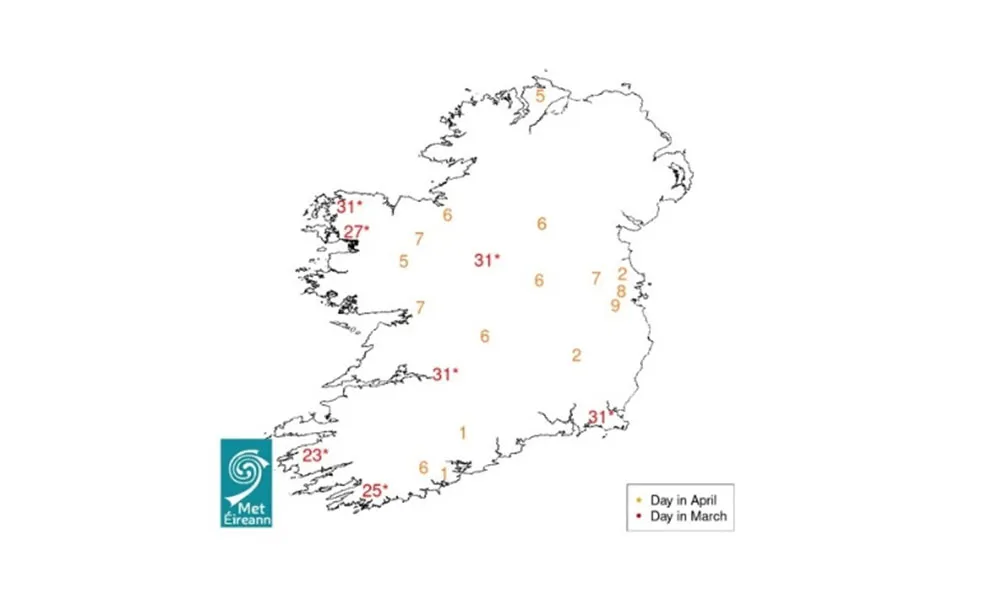
DAFM forecast for 2025
The Department of Agriculture, Food and the Marine, in collaboration with Met Éireann and UCD, has issued its Nematodirus forecast for 2025. This forecast provides farmers with a forecast – based on likely egg-hatching time – of the risk of disease caused by infection with the Nematodirus battus roundworm.
About Nematodirosis
Nematodirosis is a parasitic disease that mostly impacts young lambs between the ages of six and twelve weeks. Infection by the Nematodirus battus roundworm occurs when lambs graze on infected pastures. N. battus larvae hatch in spring, in “mass hatching events”, when weather conditions are favourable. Symptoms of disease in infected lambs usually appear in late April, May and June.
Symptoms
Newly consumed Nematodirus larvae invade the lamb’s intestinal wall, resulting in severe symptoms including dehydration and weight loss caused by diarrhoea. In flocks suffering from nematodirosis, it is common to see lambs congregating around water sources as a result of severe thirst. Filth at the tail end, caused by scour, is also commonly observed.
The forecast
The Nematodirus forecast is based on observation of soil temperatures during March for suitable hatching conditions. According to the forecast, eggs hatched in Atlantic coastal areas in late March, with mass hatching events occurring across the rest of Ireland in early April (see map below). This forecast should be used by farmers as a guide when choosing a suitable time to dose.

When to treat
Lambs aged between 6 and 12 weeks should be grazed 2 weeks after the presumed date of peak Nematodirus hatching. Based on this analysis, farmers on the Atlantic coast should dose around mid-April, while those in the rest of the country should treat for Nematodirus later in the month.
Choosing the right wormer
Nematodirosis should be treated with white drenches (benzimidazoles). These products are effective against worms of all ages. Obviously, farmers can make up their own mind when choosing the right product for them, but personally I would recommend Albex when dealing with a Nematodirus infection.
This product is highly effective and will kill worms of all ages. It is also effective against other parasites, including lungworms, tapeworms and adult liver fluke. This means that treatment with this product will help to set lambs up for summer grazing, by ensuring they are free of the burden of parasitic infection for several weeks.
Anthelminthic resistance
As always when using worm drenches, farmers should exercise restraint. Given the increasing problem of anthelmintic resistance on Irish farms, it is important that animals are not overdosed. The manufacturer’s instructions should be carefully followed when administering drenches. Each animal should be weighed before treatment, and only the recommended volume for their weight should be administered. Animals that aren’t at risk (older animals) should not be treated at this time, unless they are showing signs of a parasitic infection.










